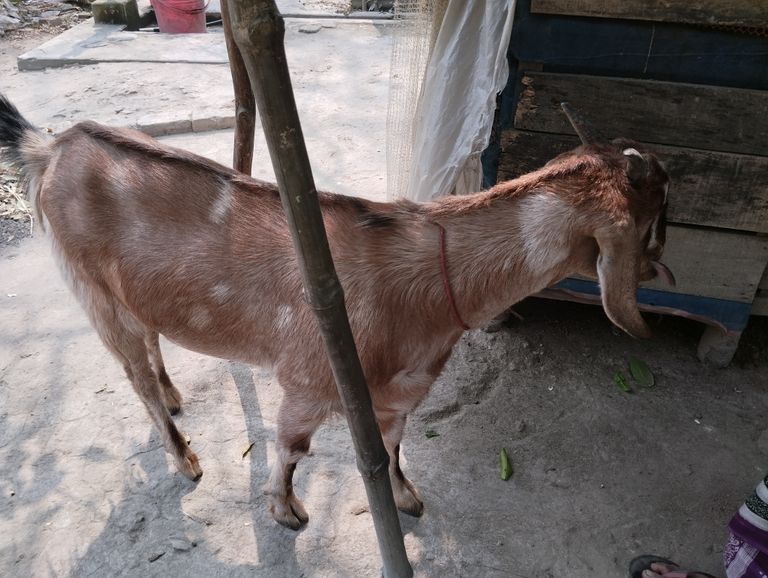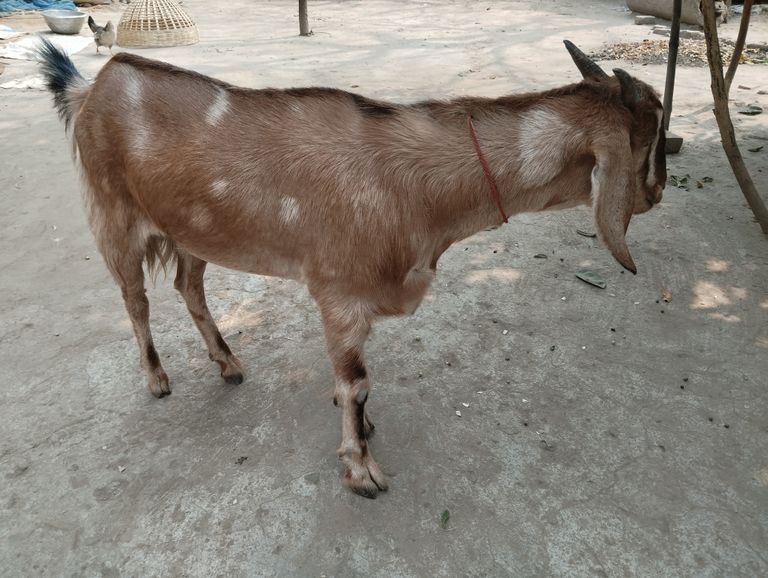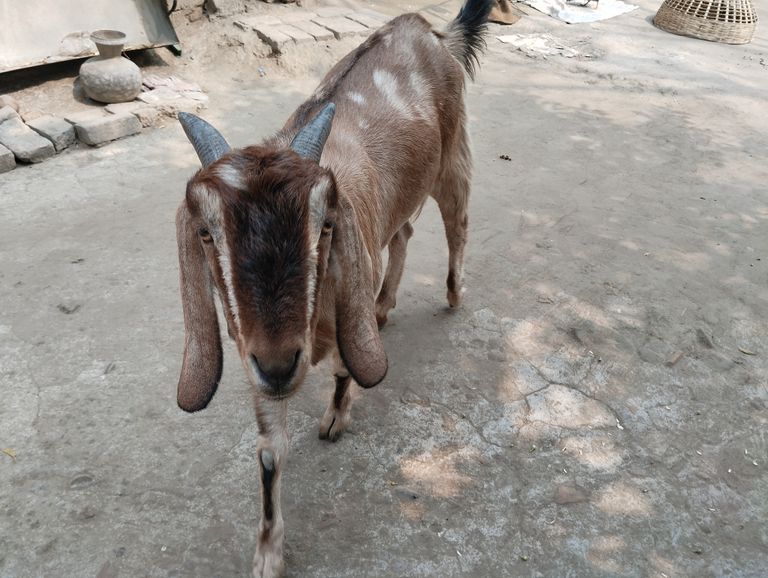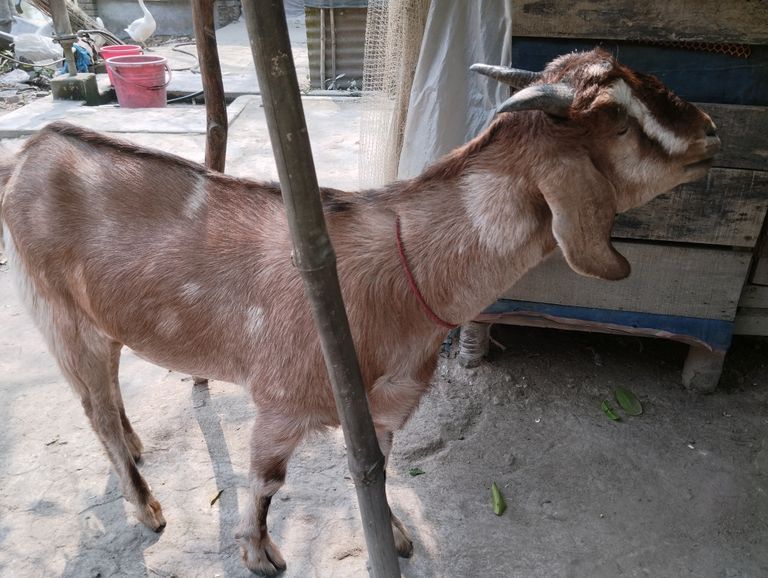
Black Bengal Goat Farming A Profitable Livestock Business.
The Black Bengal goat is a highly profitable and adaptable goat breed native to Bangladesh, India, and surrounding regions. This breed is famous for its high fertility rate, disease resistance, excellent meat quality, and premium skin quality. If you are interested in starting a profitable goat farming business, this guide will provide you with a detailed roadmap on how to successfully raise Black Bengal goats.
- Why Choose Black Bengal Goats?
Advantages of Black Bengal Goat Farming:
- High Fertility Rate: Black Bengal goats give birth 2-3 times a year, often with multiple kids.
- Excellent Meat Quality: The meat is tender, flavorful, and highly demanded in the market.
- Fast Growth Rate: They reach maturity quickly, making them ideal for commercial farming.
- Low Maintenance Cost: They require minimal feed and care compared to other breeds.
- Disease Resistance: They are naturally resistant to many common goat diseases.
- High-Quality Skin: The leather from Black Bengal goats is world-famous for its fine texture.
- Setting Up a Black Bengal Goat Farm
A. Selecting a Suitable Location
Choose a dry, elevated area with proper drainage to prevent diseases.
Ensure access to clean water, green fodder, and shelter from harsh weather.
A location near a market or transportation facilities is beneficial for sales.
B. Building a Goat Shelter (Goat House)
Space Requirement: 10-12 sq. ft. per adult goat and 4-6 sq. ft. per kid.
Ventilation: Proper air circulation is essential to prevent respiratory diseases.
Flooring: Raised wooden or concrete floors help keep the shelter dry and clean.
Bedding: Use straw, sawdust, or dry leaves for comfortable bedding.
Protection: Secure the shelter to protect goats from predators like foxes and stray dogs.
- Feeding Black Bengal Goats
A. Types of Feed
- Green Fodder: Napier grass, maize, cowpea, and legume fodders provide essential nutrients.
- Dry Fodder: Straw, hay, and leaves supplement the diet, especially in dry seasons.
- Concentrate Feed: A mix of broken maize, wheat bran, soybean meal, and minerals improves growth.
- Salt & Mineral Blocks: Provide essential minerals for better health and reproduction.
- Water: Clean and fresh drinking water should be available at all times.
B. Feeding Schedule
Morning: Green fodder + fresh water
Afternoon: Concentrate feed (for pregnant/lactating goats)
Evening: Dry fodder + fresh water
- Breeding and Reproduction
A. Mating & Gestation
Black Bengal goats reach sexual maturity at 6-8 months.
The gestation period is 145-155 days.
They can give birth twice a year, often with twins or triplets.
B. Care of Pregnant and Newborn Goats
Provide extra nutrition to pregnant goats.
Keep the shelter clean and warm for newborn kids.
Ensure colostrum feeding within the first few hours for immunity development.
- Disease Management & Healthcare
Common Goat Diseases & Prevention
Essential Healthcare Practices
Vaccinate goats on time to prevent major diseases.
Deworm every 3-6 months to prevent parasitic infections.
Keep records of health check-ups, vaccinations, and treatments.
Consult a veterinarian immediately if goats show signs of illness.
- Marketing and Selling Black Bengal Goats
A. Selling Live Goats
Sell goats to local meat markets, restaurants, and exporters.
Target festivals and religious events when demand is high.
B. Selling Goat Products
Goat Meat: Highly demanded in local and international markets.
Goat Skin: Used for making high-quality leather products.
Goat Manure: Organic fertilizer for farmers and gardeners.
C. Online & Offline Marketing Strategies
Use social media, websites, and online classifieds to promote sales.
Partner with local butchers, hotels, and agro-businesses.
Attend agricultural fairs and exhibitions to showcase your farm.
- Financial Aspects of Black Bengal Goat Farming
A. Initial Investment
B. Profit Potential
A well-managed farm with 50-100 goats can generate $10,000 - $25,000 per year.
Returns increase significantly as the farm grows.
Tips for Success in Black Bengal Goat Farming
Start small and expand gradually based on experience.
- Maintain proper records of expenses, breeding, and sales.
- Provide quality feed and healthcare for maximum growth and profit.
- Use modern techniques like AI breeding and organic feed for better results.
- Network with other farmers and industry experts for guidance and opportunities.
Black Bengal goat farming is a highly profitable and sustainable business. With low investment, minimal risk, and high returns, it is an excellent opportunity for farmers and entrepreneurs. By following the right housing, feeding, breeding, healthcare, and marketing strategies, you can establish a successful goat farming business and achieve long-term financial stability. Are you ready to start your Black Bengal goat farm? Let us know if you need more guidance.

Complete Guide to Goat Feed: Nutrition, Types, and Best Practices
Raising healthy goats requires proper nutrition, which starts with a well-balanced diet. Goats are natural foragers, but providing them with the right feed is essential for growth, milk production, and overall health. This blog will cover everything you need to know about goat feed, including essential nutrients, types of feed, feeding schedules, and tips for maintaining a healthy diet.
- Understanding Goat Nutrition
Goats require a balanced diet consisting of carbohydrates, proteins, fats, vitamins, and minerals. The key components of goat nutrition include:
a. Carbohydrates
Provides energy for daily activities.
Found in hay, grains, and forage.
b. Proteins
Essential for muscle development and milk production.
Sources include soybean meal, alfalfa, and legume hays.
c. Fats
Necessary for energy storage and maintaining body temperature.
Found in oils, seeds, and commercial goat feed.
d. Vitamins & Minerals
Vital for immunity, bone strength, and overall health.
Goats need calcium, phosphorus, zinc, selenium, and vitamins A, D, and E.
- Types of Goat Feed
a. Forage (Grass, Hay, and Pasture)
The primary diet of goats.
High-quality hay, such as alfalfa, is rich in nutrients.
Fresh pasture provides a variety of plants, improving gut health.
b. Grains
Provide additional energy, especially for pregnant or lactating goats.
Common grains: corn, oats, barley, and wheat bran.
Should be fed in moderation to avoid bloating and digestive issues.
c. Commercial Goat Feed
Specially formulated pellets containing balanced nutrients.
Ideal for goats with high nutritional needs, such as dairy or meat goats.
d. Supplements & Minerals
Essential for preventing deficiencies.
Loose minerals or mineral blocks containing salt, calcium, and phosphorus.
Goats need constant access to fresh water and mineral supplements.
- Feeding Schedule for Goats
a. Kids (Baby Goats)
Newborns rely on mother’s milk or milk replacers.
Start introducing hay and grain at 2-3 weeks old.
b. Growing Goats (3-6 Months)
A mix of hay, grains, and minerals.
Gradual transition to an adult diet.
c. Adult Goats
70-80% of diet should be forage.
Grain as a supplement, not a primary diet.
d. Pregnant and Lactating Goats
Increased energy and protein intake.
Additional grains and alfalfa hay.
- Common Feeding Mistakes to Avoid
Overfeeding Grains: Can lead to bloating and acidosis.
Lack of Fresh Water: Goats need clean water daily.
Ignoring Mineral Supplements: Deficiencies can cause health problems.
Feeding Moldy or Spoiled Feed: Can lead to toxicity and digestive issues.
- Conclusion
Providing goats with a balanced and nutritious diet ensures their health, productivity, and longevity. By understanding their dietary needs and feeding them high-quality forage, grains, and supplements, you can keep your goats happy and thriving. Would you like more details on specific feeding plans or homemade feed recipes? Let me know.

How to Build a Goat Shelter: A Complete Guide
Raising goats can be a rewarding experience, whether for milk, meat, or companionship. However, one of the most important aspects of goat farming is providing them with a proper shelter. A well-designed goat house ensures their safety, health, and productivity. This blog will guide you through everything you need to know about building a goat shelter.
Why Do Goats Need a Shelter?
Goats are hardy animals, but they still need protection from harsh weather conditions, predators, and diseases. A good goat house provides:
Protection from rain, wind, and extreme temperatures
Security against predators like foxes, wolves, or stray dogs
A clean and dry space to prevent diseases
Comfortable space for resting, feeding, and breeding
Types of Goat Housing
Before building a shelter, it's important to choose the right type of housing based on your climate, budget, and number of goats.
- Open or Free-Range Shelter
Suitable for warm climates with little rain
Provides partial shade and protection
Best for large farms with plenty of grazing land
- Enclosed Goat Shed
Ideal for colder regions with heavy rain or snow
Provides complete protection from bad weather
Helps control feeding and breeding more effectively
- Elevated Goat House (Slatted Floor System)
Prevents waterlogging and keeps the floor dry
Reduces the risk of parasites and hoof diseases
Suitable for areas with heavy rainfall
Step-by-Step Guide to Building a Goat Shelter
- Selecting a Location
Choosing the right spot for your goat shelter is essential. Here are some factors to consider:
High ground: Avoid flood-prone areas
Good drainage: Prevents water accumulation
Easy access: Close to feeding and grazing areas
Ventilation: Ensures fresh air circulation
- Choosing the Right Materials
The materials for your goat house should be durable, affordable, and locally available. Some commonly used materials include:
Wood: For framework and flooring
Bamboo: A cost-effective and eco-friendly option
Metal sheets: For roofing to provide protection from rain and sun
Bricks or concrete: For a strong and permanent structure
- Designing the Structure
A well-designed goat shelter should include:
Proper ventilation: Windows or open spaces for airflow
Separate sections: For different age groups (kids, adults, and pregnant goats)
Feeding and watering area: To keep food clean and dry
Bedding area: Clean, dry straw or sawdust for comfort
Recommended Dimensions:
For small-scale farming, a 10x10 feet shed can house 5–6 goats
For medium-sized farms, a 20x15 feet shed is good for 10–15 goats
Provide 10–15 square feet per goat for comfortable movement
- Flooring Options
The floor should be easy to clean and dry. Common options include:
Slatted wooden floor: Best for drainage and hygiene
Concrete floor: Easy to clean but needs bedding for comfort
Earthen floor: Affordable but may become muddy in the rainy season
- Roofing and Walls
Roofing: Use slanted roofs to drain rainwater easily
Walls: Ensure 3–4 feet high walls with open spaces for airflow
Maintaining a Goat Shelter
To keep your goats healthy and comfortable, follow these maintenance tips:
- Clean the shelter regularly – Remove waste and replace bedding weekly
- Check for leaks and damages – Repair any broken parts immediately
- Ensure proper ventilation – Prevents respiratory diseases
- Keep food and water areas clean – Avoid contamination and health issues.
Building a proper goat shelter is essential for the health and productivity of your goats. With a good location, quality materials, and proper design, you can create a safe and comfortable home for your goats. Whether you are a beginner or an experienced farmer, investing in a well-structured goat house will bring long-term benefits. Would you like a detailed blueprint for a goat house? Let me know.

How to Build a Goat Shelter: A Complete Guide
Raising goats can be a rewarding experience, whether for milk, meat, or companionship. However, one of the most important aspects of goat farming is providing them with a proper shelter. A well-designed goat house ensures their safety, health, and productivity. This blog will guide you through everything you need to know about building a goat shelter.
Why Do Goats Need a Shelter?
Goats are hardy animals, but they still need protection from harsh weather conditions, predators, and diseases. A good goat house provides:
Protection from rain, wind, and extreme temperatures
Security against predators like foxes, wolves, or stray dogs
A clean and dry space to prevent diseases
Comfortable space for resting, feeding, and breeding
Types of Goat Housing
Before building a shelter, it's important to choose the right type of housing based on your climate, budget, and number of goats.
- Open or Free-Range Shelter
Suitable for warm climates with little rain
Provides partial shade and protection
Best for large farms with plenty of grazing land
- Enclosed Goat Shed
Ideal for colder regions with heavy rain or snow
Provides complete protection from bad weather
Helps control feeding and breeding more effectively
- Elevated Goat House (Slatted Floor System)
Prevents waterlogging and keeps the floor dry
Reduces the risk of parasites and hoof diseases
Suitable for areas with heavy rainfall
Step-by-Step Guide to Building a Goat Shelter
- Selecting a Location
Choosing the right spot for your goat shelter is essential. Here are some factors to consider:
High ground: Avoid flood-prone areas
Good drainage: Prevents water accumulation
Easy access: Close to feeding and grazing areas
Ventilation: Ensures fresh air circulation
- Choosing the Right Materials
The materials for your goat house should be durable, affordable, and locally available. Some commonly used materials include:
Wood: For framework and flooring
Bamboo: A cost-effective and eco-friendly option
Metal sheets: For roofing to provide protection from rain and sun
Bricks or concrete: For a strong and permanent structure
- Designing the Structure
A well-designed goat shelter should include:
Proper ventilation: Windows or open spaces for airflow
Separate sections: For different age groups (kids, adults, and pregnant goats)
Feeding and watering area: To keep food clean and dry
Bedding area: Clean, dry straw or sawdust for comfort
Recommended Dimensions:
For small-scale farming, a 10x10 feet shed can house 5–6 goats
For medium-sized farms, a 20x15 feet shed is good for 10–15 goats
Provide 10–15 square feet per goat for comfortable movement
- Flooring Options
The floor should be easy to clean and dry. Common options include:
Slatted wooden floor: Best for drainage and hygiene
Concrete floor: Easy to clean but needs bedding for comfort
Earthen floor: Affordable but may become muddy in the rainy season
- Roofing and Walls
Roofing: Use slanted roofs to drain rainwater easily
Walls: Ensure 3–4 feet high walls with open spaces for airflow
Maintaining a Goat Shelter
To keep your goats healthy and comfortable, follow these maintenance tips:
- Clean the shelter regularly – Remove waste and replace bedding weekly
- Check for leaks and damages – Repair any broken parts immediately
- Ensure proper ventilation – Prevents respiratory diseases
- Keep food and water areas clean – Avoid contamination and health issues
Building a proper goat shelter is essential for the health and productivity of your goats. With a good location, quality materials, and proper design, you can create a safe and comfortable home for your goats. Whether you are a beginner or an experienced farmer, investing in a well-structured goat house will bring long-term benefits. Would you like a detailed blueprint for a goat house? Let me know.
Proper ventilation: Windows or open spaces for airflow
Separate sections: For different age groups (kids, adults, and pregnant goats)
Feeding and watering area: To keep food clean and dry
Bedding area: Clean, dry straw or sawdust for comfort
Recommended Dimensions:
For small-scale farming, a 10x10 feet shed can house 5–6 goats
For medium-sized farms, a 20x15 feet shed is good for 10–15 goats
Provide 10–15 square feet per goat for comfortable movement
- Flooring Options
The floor should be easy to clean and dry. Common options include:
Slatted wooden floor: Best for drainage and hygiene
Concrete floor: Easy to clean but needs bedding for comfort
Earthen floor: Affordable but may become muddy in the rainy season
- Roofing and Walls
Roofing: Use slanted roofs to drain rainwater easily
Walls: Ensure 3–4 feet high walls with open spaces for airflow
Maintaining a Goat Shelter
To keep your goats healthy and comfortable, follow these maintenance tips:
- Clean the shelter regularly – Remove waste and replace bedding weekly
- Check for leaks and damages – Repair any broken parts immediately
- Ensure proper ventilation – Prevents respiratory diseases
- Keep food and water areas clean – Avoid contamination and health issues
Building a proper goat shelter is essential for the health and productivity of your goats. With a good location, quality materials, and proper design, you can create a safe and comfortable home for your goats. Whether you are a beginner or an experienced farmer, investing in a well-structured goat house will bring long-term benefits. Would you like a detailed blueprint for a goat house? Let me know.